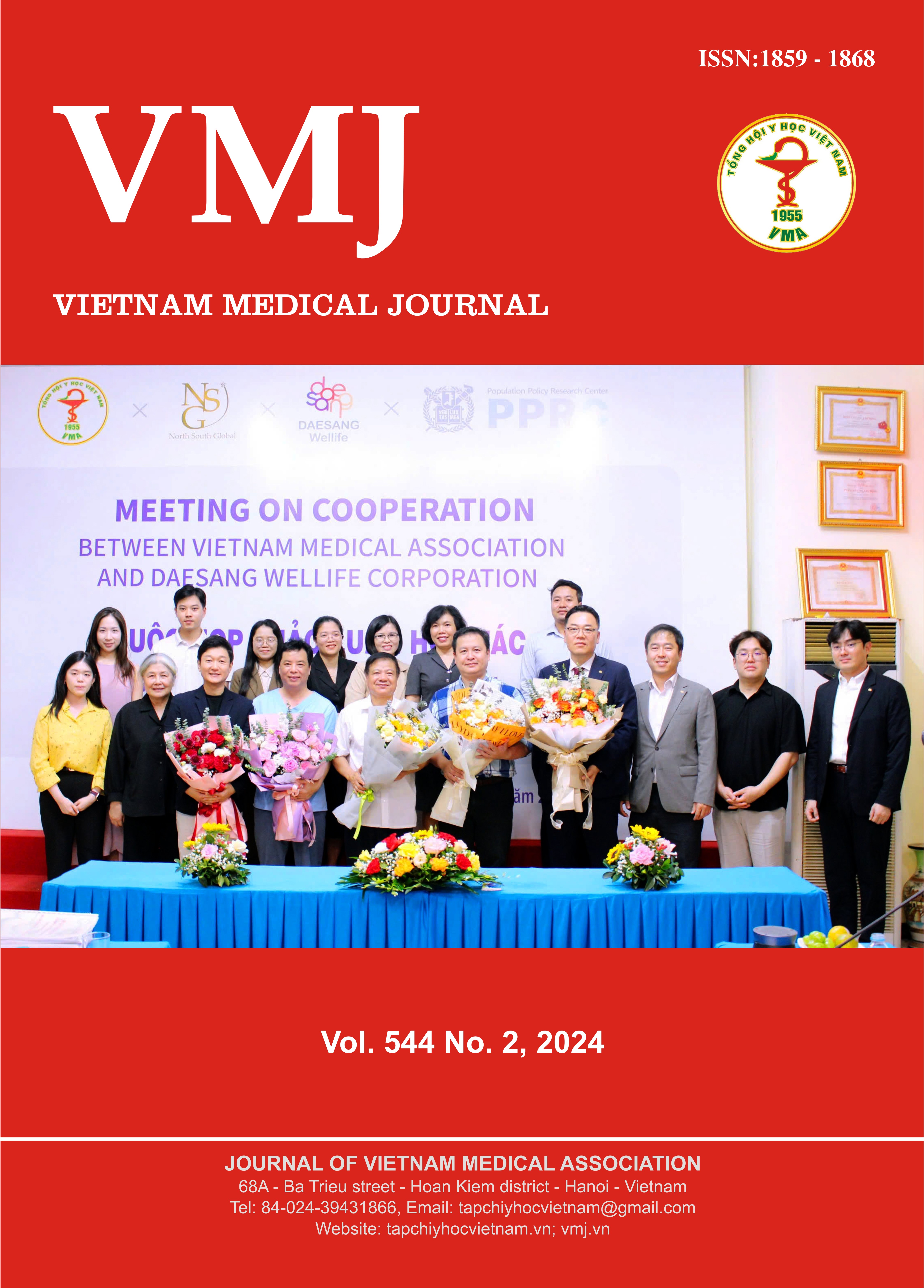CLINICAL CHARACTERISTICS OF PATIENTS WHO TREATED CLOSED DISTAL END OF THE TIBIA FRACTURES BY LOCKING PLATE AT MILITARY HOSPITAL 175
Main Article Content
Abstract
Objectives: To survey some clinical characteristics of patients with closed fractures of the distal end of the tibia who were osteosynthesis with a locking plate at Military Hospital 175. Subjects and methods: A retrospective combined prospective research conducted at Military Hospital 175 including 51 adult patients with closed fractures of the distal end of the tibia treated surgically by locking plate method during the period from January 2021 to January 2024. Results: The average age of the study subjects was 52.76 ± 15.67 years old, the oldest age was 85, the youngest was 21, of which the age group < 60 years old accounted for 60.78%. The ratio of male patients / female patients was 1.22/1 with males accounting for 28/51 cases. The main cause of distal end of the tibia fractures was traffic accidents accounting for 72.55%, due to daily life accidents accounting for 21.57%, and due to occupational accidents accounting for 5.88%. The proportion of patients with combined medical diseases was 14/51 cases. The majority of patients had associated fibula fractures, with a ratio of 49/51 cases. Conclusion: In this study, the distal end of the tibia fractures were common in the working age group, the cause of injury is mainly due to traffic accidents with high energy trauma, so there were often other accompanying injuries, rarely a simple fracture of the lower end of the tibia.
Article Details
Keywords
Lower limb, distal end of the tibia, clinical characteristic
References
2. Carter T.H., Duckworth A.D., Oliver W.M., et al. (2019) Open Reduction and Internal Fixation of Distal Tibial Pilon Fractures. JBJS Essent Surg Tech. 9 (3):e29.
3. Nguyen Van Duong, Le Thanh Son, Le Trong Luat (2023) Assessment the results of treatment of close fracture surgery of distal tibial and fibular with locking plates screw at Thanh Nhan hospital. Vietnam medical journal. 529 (2):377-383.
4. Mauffrey C., McGuinness K., Parsons N., et al. (2012) A randomised pilot trial of "locking plate" fixation versus intramedullary nailing for extra-articular fractures of the distal tibia. J Bone Joint Surg Br. 94 (5):704-708.
5. Fleisher L.A., Fleischmann K.E., Auerbach A.D., et al. (2014) 2014 ACC/AHA guideline on perioperative cardiovascular evaluation and management of patients undergoing noncardiac surgery: executive summary: a report of the American College of Cardiology/American Heart Association Task Force on Practice Guidelines. Circulation. 130 (24):2215-45.
6. Tran Quoc Doanh, Nguyen Anh Sang (2024) Relationship between hyperblood sugar and wound after clean surgery for osteosynthesis in the upper limb. Vietnam medical journal. 538 (2):234-237.
7. Nguyen Ba Ngoc, Pham Ngoc Thang, Nguyen Sy Trieu, et al. (2023) Evaluation of result treatment of the distal tibial fractures by locking plate fixation at 103 military hospital. Vietnam medical journal. 532 (1B):6-11.


